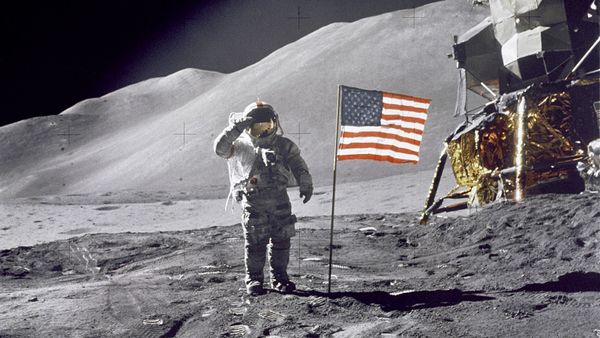
On Feb. 20, 1947, the humble fruit fly boldly went where no Earth creature had gone before. Of all things, the historic trip was made on a rocket originally designed by the Nazis.
Toward the end of World War II, American soldiers seized a number of German V-2 ballistic missiles, along with enough component pieces to fill 300 train cars. The V-2s were high-tech, long-range weapons that could fly at a top speed of 3,500 miles per hour (5,632 kilometers per hour) and hit targets standing as far as 200 miles (321 kilometers) away.
Advertisement
Uncle Sam's military realized that V-2s had great scientific potential. In 1946, the armed forces began test-firing them at the White Sands Missile Range in New Mexico. Even back then, there was an interest in the possibility of putting a man in outer space someday. But first, some major technical questions needed answering. For starters, scientists wondered if exposure to cosmic radiation would harm future astronauts.
Starting in 1946, the military launched a series of biological samples into space on V-2 rockets. Seeds from corn, rye and other plants were sent skyward, often reaching heights of 80 miles (130 kilometers) or more above the ground. Most — but not all — of these were recovered post-launch and thoroughly examined by scientists working with the U.S. Navy.
According to the Office of Naval Research, the White Sands Missile Range didn't get around to sending animals into space until 1947. On February 20 of that year, a V-2 loaded with fruit flies traveled 67 miles (109 kilometers) into the air. NASA currently recognizes the altitude of 66 miles (100 kilometers) as the point where space officially begins. Therefore, those bugs are considered the first animals to ever visit the final frontier.
Why were fruit flies chosen for the cosmic journey? Genetically, their species has way more in common with Homo sapiens than you might think. Around 75 percent of all the disease-causing genes present in humans have analogues in the fruit fly's genetic code. Studying fruit flies can therefore teach us a lot about our own genetic make-up, which is a big reason the insects are so popular amongst biological researchers. It's also the reason the White Sands Missile Range wanted to see what would happen to them in outer space.
On the V-2's descent back to Earth, a capsule containing the fruit flies broke away and a parachute slowly lowered it down onto New Mexican soil. The scientists were relieved to see that the flies were still alive. More importantly, the cosmic radiation had no genetic effect on them. In other words, the insects hadn't been mutated in space. That encouraged biologists to launch other animals on V-2 excursions. By the time NASA was founded in 1958, America had sent numerous hamsters, mice and monkeys into space (sadly, though, many of those didn't make it back alive).
Advertisement

